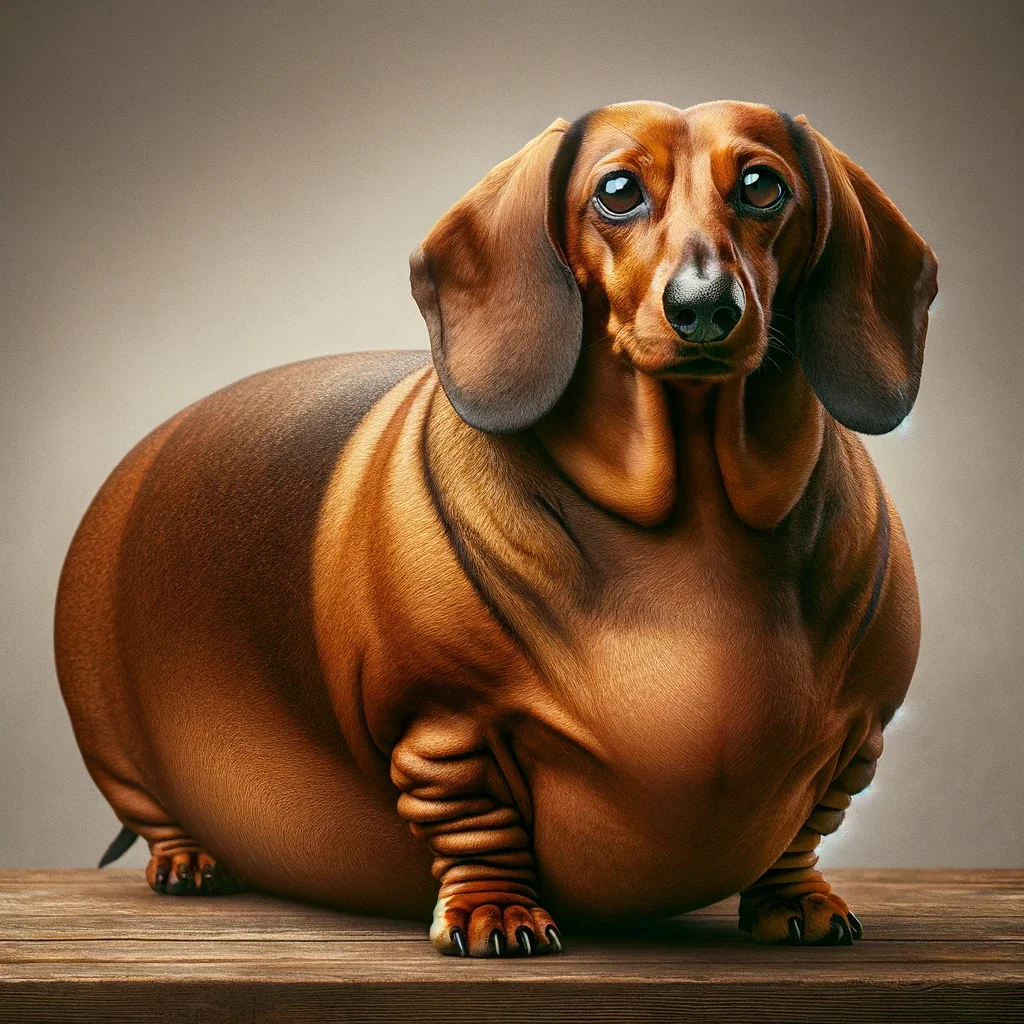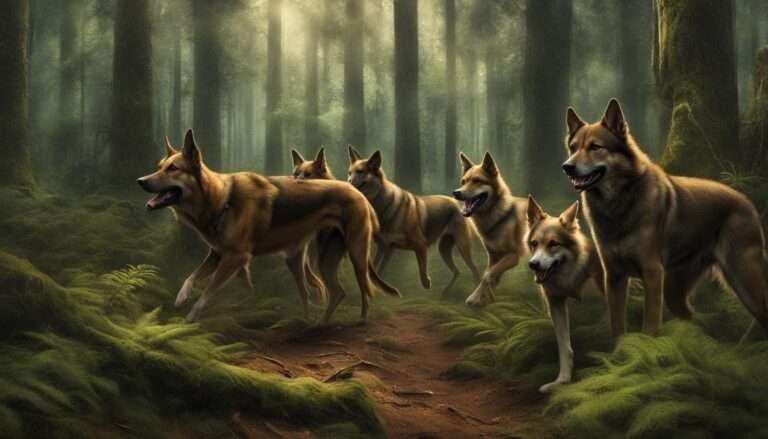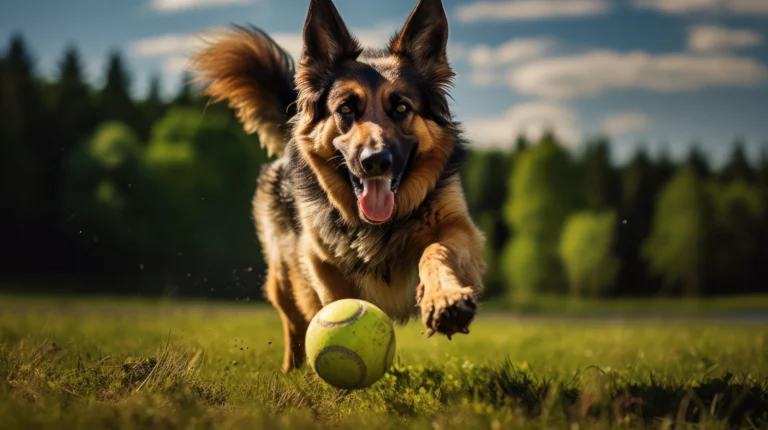17 Interesting Facts about Dachshunds
The Sausage Dog
I love sausage dogs! Even though a sausage dog was the first breed of dog that ever bit me. It was in 1977 and I was a curious 4 year old on a Welsh beach holiday in Pendine. I approached a dachshund, reached out to touch its cute, floppy ear, and it bit me!
It was a painful, but not serious, lesson learned, and one I passed on to my own daughter and my grandson – never approach a dog you don’t know and stick your fingers in its face!
That incident aside, I’ve had nothing but amazing experiences with the boisterous little breed! I think they’re a wonderful breed with a fantastic personality.
With them being very popular the world over, I thought I’d put together a list of interesting facts about dachshunds. I hope you enjoy them!
1. Dachshunds Were Bred to Hunt Badgers
Dachshunds were bred in Germany for one job – to hunt badgers. The name Dachshund literally translates to ‘Badger Dog.’

European Badgers are powerful, heavyset animals with formidable teeth and claws. The fact that a dachshund will quite happily run into a badger sett alone, and take a badger on, says a lot about the breed.
Although I dislike the thought of dogs killing badgers, and am very happy that the practice is banned in the UK, we can’t get away from the fact that the Dachshund was bred for that very purpose, and if it hadn’t have been, we wouldn’t have the lovable little breed we affectionately know as the sausage dog!
The elongated sausage shape (or wiener shape in the US) of the dachshund is a direct result of careful breeding selection practices. Their shape allows them to move quickly through the confined spaces of the tunnels they hunt badgers in, and their robust build provides the strength they need when confronting a badger in such confined spaces.
So although we’re used to the fun-loving personality of the dachshund, they’re actually a well-tuned hunting machine that can take on a powerful, wild animal.
2. Dachshunds Come in Three Coat Types
Dachshunds are distinguished not only by their unique body shape but also by the variety in their coat types. The three coat types are as follows:
The smooth-coated Dachshund, the most commonly recognised, has a sleek, shiny coat that lies close to the body. This type of coat is relatively low-maintenance, requiring only regular brushing to keep it glossy and healthy. The smooth coat also highlights the Dachshund’s elegant, elongated lines, making it a favourite in dog show rings.
The wirehaired Dachshund has a distinctive, rough coat with a thick undercoat, providing extra insulation – an advantage in the often chilly climates in which they hunted. This coat type requires more grooming, including regular brushing and occasional hand-stripping to maintain its characteristic texture. The wiry coat gives these Dachshunds a rugged, adventurous appearance.
The long-haired Dachshund has a flowing coat that is longer under the neck, on the underside of the body, and behind the legs. This coat type stands out but needs regular grooming to prevent tangles and mats.
3. Dachshunds Have a Very Strong Sense of Smell
Dachshunds have an exceptional sense of smell, a trait that places them among the best sniffers in the dog world. Bred initially for hunting in Germany, their powerful noses were essential for tracking down badgers, even underground.
They have around 125 million , making their sense of smell much sharper than humans. Although they’re not commonly used in hunting today, their natural scenting ability is ideal for activities that involve tracking scents.

Dachshunds excel in using their nose to follow trails, showing their deep-rooted, innate hunting skills. In spite of their diminutive size, their remarkable sense of smell is a standout feature of this wonderful breed.
4. Dachshunds are Fearless
If ever the saying, ‘It’s not the size of the dog in the fight, it’s the size of the fight in the dog,’ applied to one breed, it would have to be the Dachshund!

Dachshunds are renowned for their fearless nature, a trait deeply ingrained from their origins as hunting dogs. Originally bred to hunt badgers, a formidable prey, they required an immense amount of courage and tenacity. This fearlessness is reflected in their confident and bold demeanour, often surprising given their small stature – I’ve seen a miniature dachshund make a great dane back down!
Despite their size, Dachshunds typically do not shy away from challenges and are known to face much larger dogs or unfamiliar situations with remarkable bravery. This courage, however, is balanced with a loving personality, making them not just brave but also wonderful companion dogs.
Their fearlessness goes beyond physical confrontations; it is also evident in their eagerness to explore new environments and their persistence in problem-solving. This makes them particularly engaging pets, ready to embark on adventures or tackle new challenges with their owners.
5. Dachshunds are Stubborn!
Dachshunds are well-known for their stubbornness, a trait that’s deeply embedded in their personality. As with much of their character, this stubborn streak can be attributed to their breeding history; originally developed for hunting, they needed to be independent thinkers to track and flush out game, often working alone or in small packs.
This independence is a double-edged sword, making them determined and clever, but also sometimes resistant to following commands.
Their stubborn nature often manifests in a desire to do things their own way and on their own schedule. This can be particularly noticeable during training sessions, where a Dachshund may appear uninterested or distracted.
However, this isn’t a sign of low intelligence; in fact, Dachshunds are very intelligent and can learn a variety of tasks and commands. It’s just that they prefer to do things that interest them or provide immediate rewards.
This trait requires patience and consistency from owners. It’s much more effective, as with any dog breed, to motivate them with positive reinforcement like treats or praise rather than using strict or harsh training methods. Understanding and working with their stubborn nature, rather than against it, can lead to successful training and a harmonious relationship.
6. Dachshunds are Highly Intelligent
Dachshunds are known for their intelligence, which is often displayed in their quick learning ability and problem-solving skills. This intelligence makes them adept at understanding commands and learning tricks, though their independent nature sometimes makes them seem like they have a mind of their own.

Their cleverness can be seen in how they interact with their environment and their owners. Dachshunds are often good at figuring out complex tasks, and they can be quite creative in getting what they want, whether it’s finding a hidden treat or manoeuvring their way into a cosy spot.
This breed’s intelligence also means they need mental stimulation to prevent boredom. Puzzle toys, scent games, and interactive play can provide the mental exercise they require. Keeping their minds active is just as important as physical exercise for this smart breed.
7. Dachshunds Make Great Pets
Dachshunds are exceptional family pets, known for their loyalty, affection, and child-friendly nature. Their size and playfulness make them ideal companions for families, adapting well to various household environments.
Despite their small stature, they have a big personality, often becoming the centre of attention in families!
Their affectionate nature means they form strong bonds with family members, often becoming particularly attached to one person. However, they are also sociable with all members of the household, including children, with whom they share a playful and gentle nature.
It’s important, though, to teach children how to interact respectfully with these small dogs, as their long backs can be vulnerable to injury.
8. Dachshunds Don’t Need Huge Homes
Dachshunds are remarkably adaptable to apartment and flat living, a trait that makes them popular among people who live in cities.
Their small size and moderate exercise needs make them well-suited to life in smaller living spaces, including flats and apartments. Despite their adaptability, it’s still important to provide them with regular exercise to maintain their physical and mental well-being.
9. They are a Small Dog With a Big Voice!
Dachshunds are known for their unique and expressive vocalizations, which vary from barks and howls to more distinctive sounds. Their vocal range is quite extensive and can convey different emotions and needs.
Barking: Dachshunds are often vocal through barking. They use barking to alert their owners to strangers or unusual occurrences, making them effective watchdogs despite their small size. Their bark can be surprisingly loud and assertive for their stature.
Howling: Some Dachshunds engage in howling, a behaviour that can be linked to their hunting background. Howling can be a form of communication with their owners or a response to certain sounds like sirens or other dogs howling.
The ‘Dachshund Scream’: Perhaps the most notable and unique vocalization is the ‘Dachshund Scream’. This is not a regular part of their repertoire, but can happen when they are extremely excited, distressed, or in pain. It’s a loud and sometimes alarming sound, quite different from their normal barks or growls.
Whining and Whimpering: These sounds are usually made when they seek attention or express discomfort. Dachshunds might whine when they want to be fed, play, or desire companionship.
Growling: They may growl as a warning or when they feel threatened. However, growling can also be part of their playful behaviour during games.
10. Dachshunds Love to Dig!
Another characteristic which stems from their hunting background, Dachshunds have a natural instinct to dig and burrow.

In the past, their primary role was to excavate badger dens, which required both determination and a strong digging ability. Today, this instinct can create unwanted holes in gardens!
For owners, understanding and managing this digging behavior is important. Providing a designated area in the garden where the Dachshund is allowed to dig can be an effective solution. This not only satisfies their natural instinct but also helps to protect other areas of the garden from being dug up.
It’s also important to be vigilant about the safety of the areas where Dachshunds choose to dig. Ensuring that there are no hazards, such as sharp objects or toxic plants, in these areas is crucial.
Regular checks of fences and boundaries are also advised to prevent escape attempts through dug tunnels – they are adept escape artists!
11. Dachshunds have Delicate Backs
Dachshunds are prone to back problems, primarily due to their unique body shape. Their long spine and short rib cage make them susceptible to intervertebral disc disease (IVDD), a condition affecting the discs that cushion the vertebrae in the spine. This can lead to pain, nerve damage, and in severe cases, paralysis.
An expert at Dachshund IVDD UK said,
The data shows that, typically, 1 in 4 Dachshunds will suffer some degree of back disease during their lifetime. This figure is about 10-12 times higher than would be expected in the general population of dogs.
Although it is not possible to prevent back issues in all dachshunds, there are preventive measures that should be taken by all owners of the breed:
Weight Management: Keeping a Dachshund at a healthy weight is crucial. Excess weight puts additional strain on their spine, increasing the risk of back problems. Regular exercise and a balanced diet are key.
Proper Handling: Be mindful of how you pick up a Dachshund. Always support both the chest and rear, holding them in a way that keeps their spine aligned and prevents unnecessary bending or twisting.
Avoid High Jumps: Discourage your Dachshund from jumping off high furniture or climbing steep stairs, as this can put pressure on their spine. Using ramps or steps to access higher areas, like a couch or bed, can help.
Regular Exercise: Gentle, consistent exercise helps maintain strong muscles, which support the spine. Avoid activities that involve a lot of jumping or sharp twists.
12. Dachshunds Move in Celebrity Circles!
Dachshunds have been the breed of choice for many famous people over the years – here are a few notable sausage dog owners:
Pablo Picasso: The renowned Spanish artist had a Dachshund named Lump, who appeared in several of his artworks. Lump had a significant influence on Picasso and was a beloved companion.
Andy Warhol: The iconic American artist and leading figure in the visual art movement known as Pop Art, had a pair of Dachshunds named Amos and Archie. They were often seen accompanying him.
David Hockney: The famous British painter has been a long-time Dachshund owner. His dogs, Stanley and Boodgie, have been subjects in a large number of his paintings and drawings.
Adele: The British singer-songwriter is known to have a Dachshund.
13. Dachshunds are Prone to be Overweight
Dachshunds have a well-known propensity for gaining weight, making it very important to manage their diet carefully to prevent obesity.
A healthy weight is particularly important for this breed, as excess weight can exacerbate back problems and other health issues. Balancing their diet and ensuring they get enough exercise is key to maintaining their overall health.
The love of food in Dachshunds means they can be prone to overeating if given the chance.

It’s important to measure their food and stick to a feeding schedule. Treats should be given sparingly and ideally should be a part of their daily calorie count. Opting for low-calorie treats or using a portion of their regular food as treats can be a good strategy.
If you have an overweight dog of any breed, we have an article which will help your dog lose weight.
14. Dachshunds Have a High Prey Drive
Due, again, to their hunting background, dachshunds are very keen to chase small animals. It is not advisable to let them be around small animals such as Guinea pigs.
Although dachshunds can get along with cats, this relationship should begin as early as possible in the dachshund’s life, and under close supervision.
They will be off like a shot if they spot a rabbit or squirrel when out on a walk, so keeping them on a lead in areas where they could come to harm when chasing such creatures, is advised.
15. Dachshunds Have a Playful and Mischievous Nature
Dachshunds are well-known for their playful and mischievous nature, making them a fun dog to own!
They love playing games, especially games involving digging and puzzle solving.
Their mischievous side often comes out to get want they want, be it food, attention, or play! They might resort to funny antics like hiding their toys, playfully stealing items, or finding sneaky ways to get extra treats!
Engaging them in structured play, training sessions, and providing them with various toys can help keep their minds active and prevent boredom, which can often lead to mischief.
16. Dachshunds Have a Relatively Long Life Span
Dachshunds are known for their relatively long lifespan, with many living into their early to mid-teens. The world’s oldest Dachshund on record, a testament to the breed’s longevity, impressively lived to be 21 years old.
17. Dachshunds Make Great Watchdogs
Despite their small size, Dachshunds make excellent watchdogs. Their alertness and tendency to bark at unfamiliar sounds or presence make them effective at notifying their owners of potential intruders or unusual activities.
This trait dates back to their origins as hunting dogs, where being alert and vocal was crucial for their role.

Dachshunds have a surprisingly loud bark for their size, which can serve as a deterrent to unwanted visitors. They are naturally protective of their home and family, often showing a fearless attitude despite their small stature. This protective nature, combined with their vocal tendencies, makes them vigilant watchdogs.
Thanks for reading! If you have any interesting facts about the dachshund, please let us know in the comment section – we’d love to hear from you! Why not check out our cute Dachshund Mug before you go?







